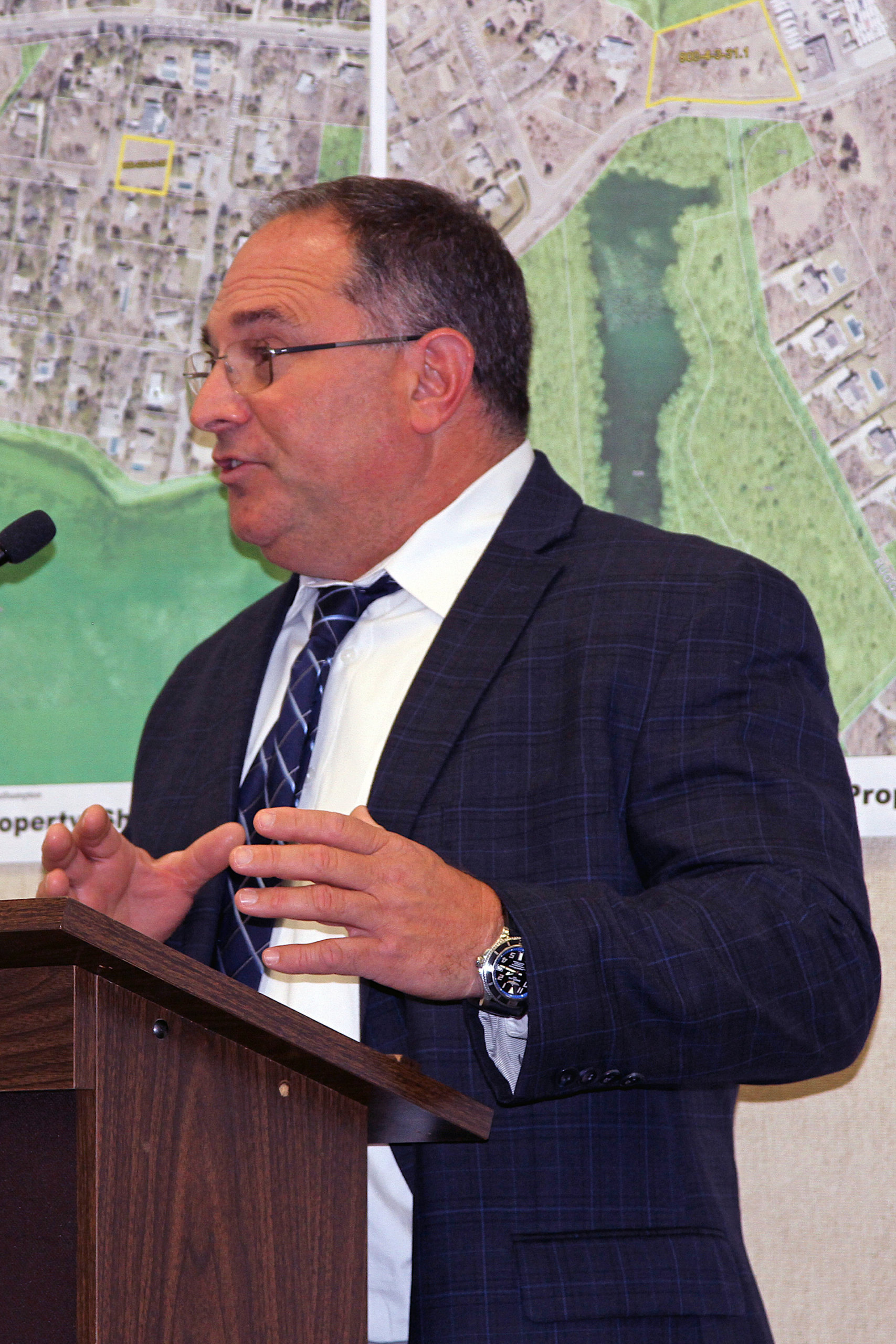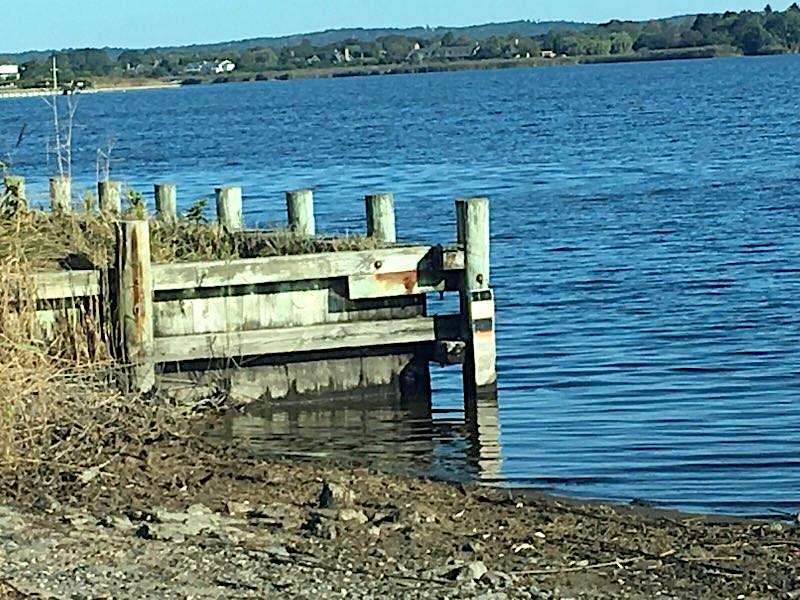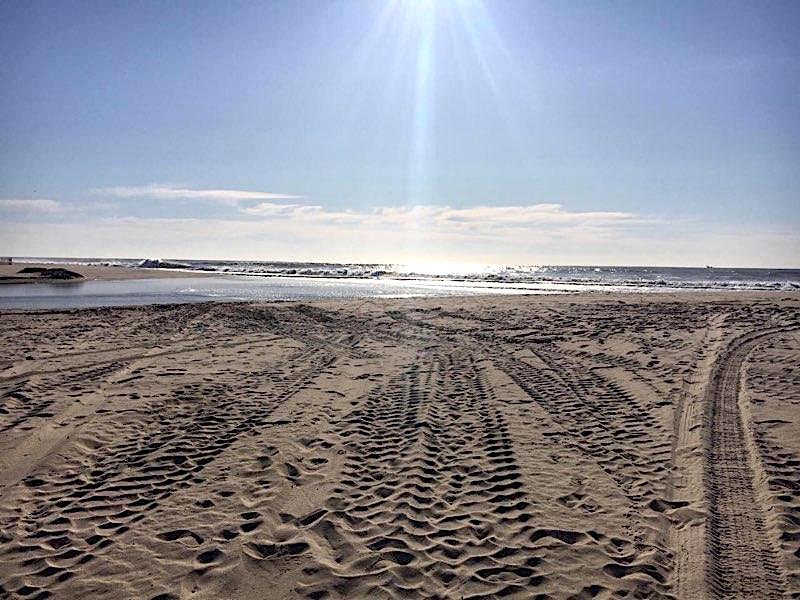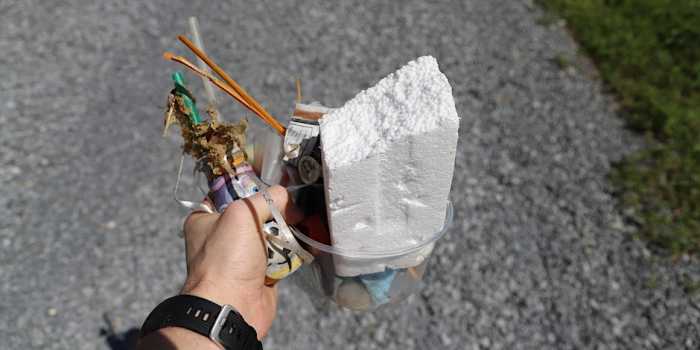Protecting Mecox Saves Southampton


Mecox Bay affects Southampton Town more than one might think.
The Water Mill body of water nestled between Southampton and Bridgehampton has not only an environmental impact, but direct economic control over fishing and agricultural industries, and influences recreational pastimes for those in the area and beyond. That’s why protecting it with a Mecox Bay Management Plan, adopted unanimously this month, was so important to the town’s trustees.
“I serve as a trustee because I’m concerned moving forward — I’m concerned generationally — and with something that’s this important and critical to everybody in the town, there should have been a written document adopted into our blue book of regulations so that future boards have guidance,” said Secretary-Treasurer Scott Horowitz, who, along with the rest of the board, manages the easement from the crest of the dune to the high tide mark. “We’re only successful when we all work together,” he said.
For hundreds of years, a cut, or man-made trench, has been dug between the bay and the Atlantic Ocean, allowing Mecox to drain, which adjusts the water level, raises the salinity for shellfish, and flushes it with clean ocean water. But under the U.S. Army Corps of Engineers and Department of Environmental Conservation, the trustees needed permits to be able to control the flow, and their request to reissue permits were denied in 2016 pending the submission of a plan. In the meantime, the trustees were issued emergency permits, known as incidental takes, by the DEC when flooding occurred.

“We had to jump through all these hoops and get all these documents in place, which would delay the process for weeks,” Horowitz said. “I think that everybody has come to realize that the emergency protocol is not working. Utilizing it is like waiting for a 20-car pileup on an icy interstate before you send out the salt and sand trucks. Obviously, you want to send the sand and salt trucks out as soon as you know the roadway conditions are deteriorating so that you don’t have the disaster.”
Coming Up With A Plan
Henry Gooss, who owns a home along the body of water, began the Mecox Bay Conservation Group when the request for permit was denied, because of the effect the lack of management had on his property.
“We have saturated lawns when the water in the bay rises too high,” said Gooss, who had to send pictures to Horowitz as documented proof so the trustees could get the incidental take permits. “We have to wait for an emergency, but by then the damage is done. It’s very cumbersome.”
He gathered 68 neighbors, of the 320 homes around the bay, to figure out what could be done to help. One of those was Jim McGregor, who lives on the northern side of Mecox, and helped manage discussions with the regulatory agencies. Across all parties involved, it was concluded the cut would be open when the water raises to a certain level, and data shows that by day 25, salinity and dissolved oxygen in the water will be normalized. While being mindful of sand transport east to west on the ocean beach, the cut can then be closed if it doesn’t close naturally before then. To make the document irrefutable, it was labeled a living document, meaning there’s a provision that it can be amended if need be, especially as things may change over time. The trustees unanimously approved the adoption of the management plan, and now, just need the 10-year permit to regain local control.
“I played a small role in it, but I feel as though I’ve accomplished something with everyone,” Gooss said. “Now we can efficiently and effectively manage the cut.”
The town, which can use 20 percent of the previous year’s Community Preservation Fund revenues for water quality improvement projects, awarded the trustees $271,922 to pay for real-time water quality monitoring and water level measuring.
The project has been like restoring a piece of history because of how far back the trenches date, but it will also stabilize the marine and agricultural communities.
Because the shellfish population was negatively affected when the salinity levels changed, it hurt commercial and recreational fishermen. Gooss said fishermen still harvest one million pounds of oysters and clams.
Effects On Industries

“It’s a heartbeat in that area,” said Captain Peter Haskell, a bayman who owns Haskell’s Seafood in Quogue, a seafood-processing facility, and Haskell’s Bait & Tackle, a recreational fishing shop. “The salinity and the water flow and the depth of the bay instigates growth and really prolific natural resources. When you have a very well-managed body of water, only good things come from that, and it’s all encompassing — from the bottom of the food chain right on up. I think that’s why that bay is so special. It will not only be healthy when operated the way the trustees plan to, but it’s going to instigate economic value to our community.”
Haskell said he sees the body of water as unique because the economy and the environment go hand in hand in this situation, and was thrilled to see the issue begin to be resolved.
“I had faith that it was only a matter of time until the trustees would be successful,” he said. “It’s a relief to see it unfold.”
The farms around the area have also been negatively impacted. The Halsey Farm has suffered, as the saturated fields hindered the growing conditions, Horowitz said. The roots were suffocating in a high-water table. The family grows peaches, pears, and apples, and the U.S. Fish & Wildlife Service and DEC were invited tour the farm to see the consequences on the crops firsthand.
“Forget about driving a tractor. Forget about mowing the lawn. I have trees that are dying,” Jen Halsey said. “The bay staying full for too long and the water table staying too high leaves the roots just sitting in water. They’re living and breathing just like you and I and they need air.”
“In then gives viruses and bacteria an opportunity to get into the tree and kill them,” she added. “I have at least four rows of apple trees where a little over a third of the row is dying. We’ve had to replace them, and that comes at a cost.”
Being that her farm is at a lower elevation than neighboring farms, her parking lot also floods.
“Some people may not want to park that far, or they buy less because they have to carry things farther,” Halsey said.
Harry Ludlow of Fairview Farm at Mecox knows it could happen to his crops, too. His basement, however, has experienced significant and frequent flooding because of the bay’s high water levels. Ludlow explained that his father, who owned the property until 1980, saw water in the basement one time. Since then, Ludlow has seen water in the basement at least a dozen, maybe 20 times.
“My family has been on this farm for many generations, so I’ve watched the bay over the years and watched the management, and seen the effects. Living next to the bay offers up a unique set of risks, and sometimes those can be mitigated and sometimes they can’t,” he said. “But when the bay backs up into Swan Creek and Swan Creek overflows, we have almost half a mile of property that still does get very damp. The effects could get serious as the bay gets higher and higher. The management of this bay is important, especially for all the properties at risk.”

Not only are the effects on both industries detrimental, along with the surrounding homeowners, the rest of the island also suffers. There are less jobs in these fields, fewer local oysters on menus at restaurants, or to be purchased at local fish stores. Families on fall and summer outings no longer have the opportunity to pick as many fresh fruits, like apples, or buy gallons of cider to bring home. Those looking to fish recreationally in the area will have to go elsewhere.“
“You have to protect and defend and have respect for the traditions of our agricultural folks and our commercial fishing folks,” Horowitz said. “Everyone should be around the table to make sure this is successfully managed.”
Mindful Of Erosion
Ludlow has also been worried about the environment, with increased erosion along the bay in the summer months.
“Our property has eroded where there is no bulkhead and no protection,” he said. “And the border between Swan Creek and Mecox Bay has perforated, and gotten much narrower. Wetlands have been destroyed.”
Protecting the piping plovers has also been seen as an issue — if the bay has to be dug in the summer months. That’s where the Army Corps. of Engineers comes in and they work with U.S. Fish and Wildlife in working out a system where something can be done, Halsey said.
The trustees maintain an endangered special program, and Horowitz said the incidental take permit can be applied to open up the cut while providing mitigation.
“The trustees always protect the birds,” he said. “We’ve been running that management program for quite some time.”
This plan will serve as a template for handling other bodies of water, but the use of CPF revenues remains a win-win for the community and the environment in other ways. Instead of trustee permit profits going toward Mecox Bay, funds will be able to be redeployed to other projects, like the current repairs being done on the dilapidated dock on Baycrest Avenue in Westhampton. Horowitz said the hope is to move next to repairing a rotting bulkhead on Bay Avenue in East Quogue.
“There are a lot of deteriorating boat ramps, deteriorating docks and piers, and we can now pay down debt service on bonding to get those projects done,” Horowitz said. “Now we can stick to this plan and do what’s best for the environment and do what’s best for the constituents. This plan is mindful of erosion, it’s mindful of the agricultural community, and it’s mindful of all the commercial fishermen and baymen and recreational community. There’s a huge benefit to the public, whether they live here or not. It keeps things safe and helps these things remain usable and stable for generations to come.”
desiree@indyeastend.com









